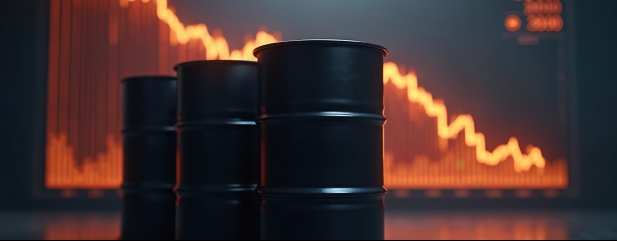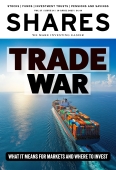Archived article
Please note that tax, investment, pension and ISA rules can change and the information and any views contained in this article may now be inaccurate.
Markets price in increased odds of recession as tariff uncertainty bites

A weaker dollar, cheaper oil and lower 10-year treasuries were high up on US treasury secretary Scott Bessent’s agenda when he came into office.
Crashing stock markets was not on the list, but this is exactly what has happened since Trump unveiled his barrage of global tariffs on 2 April, causing the third steepest two-day decline in the S&P 500 index this century.
At times like these it worth looking at the performance of other asset classes for clues as to the wider ramifications. One of the most important in the context of tariffs and trade, are currencies.
One thing which stands out like a sore thumb has been the lack of dollar strength. Ordinarily, as the world’s reserve currency the greenback would be expected to see strength as investors flock to the relative safety of US treasuries.
It hasn’t happened this time around and the dollar has now given back all the gains since the US election which were driven by a perception of so-called ‘US exceptionalism’. Dollar weakness could signal a lack of trust in US assets which would be a worrying development.
It may also reflect actions taken by countries retaliating against Trump’s tariffs in other ways. For example, French president Emmanual Macron has urged EU companies to pause investing in the US, arguing for ‘collective solidarity.’
Oil prices have collapsed with Brent crude dropping from over $80 a barrel in early January to $62 on 7 April, a new four-year low. This reflects increasing fears of economic slowdown brought about by tariff uncertainty and a decision by the OPEC+ producers’ cartel to increase production.
Investment bank Goldman Sachs has lowered its forecast for oil prices and now expects Brent crude to average $62 in 2026, reflecting lower demand amid weaker economic growth.
The bank raised the odds of a US recession to 45% from 35%, after increasing the chances of recession from 20% only a week earlier.
Expectations for lower growth coupled with a flight to safety pushed bonds yields down (prices up) with two-year treasury yields sinking to a low of 3.5% on Friday (4 April) from 3.9% a week earlier.
Intriguingly, 10-year treasury yields rose back above 4% on Friday, after touching 3.8%, reflecting fears over the inflationary impact of tariffs.
Increased odds of recession can also be seen in widening credit spreads with the US high yield spread spiking to 4.5%, its highest in 18 months. Companies with weaker balance sheets have a higher risk of default, particularly during economic downturns. [MG]
Important information:
These articles are provided by Shares magazine which is published by AJ Bell Media, a part of AJ Bell. Shares is not written by AJ Bell.
Shares is provided for your general information and use and is not a personal recommendation to invest. It is not intended to be relied upon by you in making or not making any investment decisions. The investments referred to in these articles will not be suitable for all investors. If in doubt please seek appropriate independent financial advice.
Investors acting on the information in these articles do so at their own risk and AJ Bell Media and its staff do not accept liability for losses suffered by investors as a result of their investment decisions.
 magazine
magazine








